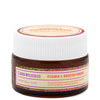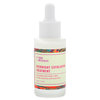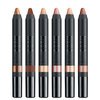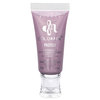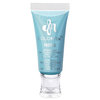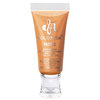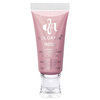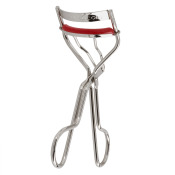Do Eyelashes Break? Yes. We Get to the Root of the Problem.
Published Dec 3, 2013

We learn as children that if an eyelash falls, you simply kiss it away and make a wish. (Mine often revolved around good grades, new plates for my Spirograph, and my dad’s lasagna for dinner.) But as you grow older and notice more and more lashes falling from grace. You might need a new lash curler—and some expert advice on how to use it correctly.
“In my experience, the number-one reason why lashes break is not necessarily the curler but using it incorrectly,” says Spencer Barnes, makeup artist for stars like Julianne Hough, Amber Heard, and Heather Graham. “Lashes are resilient, but you have to have the right tool and approach to keep them healthy.”
Here are Barnes’ for curling with minimal breakage (for more reading, check out James Vincent’s advice here):
1: Check the pads! Make sure your curler actually (still) has pads on it. Without them, the tool can crimp, damage, or break your lashes. Also, replace worn-out or loose pads as soon as they start to look creased. “Look for lash curlers that have white, red, or colored pads. While a black pad looks sleek and hides build-up, it makes it much more difficult to see where your lashes are actually positioned inside the curler.” Barnes’ pick: Kevyn Aucoin’s The Eyelash Curler.
2: Keep it clean. Clean the sticky residue from leftover mascara and lash glue build-up. “When approaching lashes with a clean tool, you’ll be better able to get an accurate, gentle curl.”
3: Condition regularly. Before curling, condition your lashes. “Before you shower is a good time to apply a conditioner,” says Barnes.Try our DIY recipe to make your own.** **
4: Curl first. Curl your lashes before you apply mascara or falsies, and if you go in for a re-curl after application, make sure the curler is clean. “This will help prevent fresh mascara from clumping and sticking, which could pull out weaker lashes by the root,” explains Barnes.
5: Position the tool correctly. “Make sure you get the entire upper lash evenly distributed inside the curler, positioned over the spongy or rubbery pad,” says Barnes. The pad is designed for that very reason—to cushion your lashes and prevent breakage.
6: Remove makeup carefully. At the end of the day, take off mascara (and all eye makeup) carefully. “If you’re having to scrub your eyes to remove product, you may be inadvertently pulling out lashes,” warns Barnes. Use a cotton pad or swab dipped in remover, and work in gentle sweeping motions; this helps to condition your lashes in the process.
If you do notice a number of missing, cut or broken lashes, don’t worry—they do grow back, says Barnes. “There are also great products like Latisse and Revitalash that will help the process and amplify the length of your natural lashes, as many experience a subtle decline in thickness of lashes over the years,” he says, noting that some women may experience unusually long lashes. The products apparently do work when used as directed, but it’s a good idea to check with your dermatologist or doctor before using (we still don’t know the long-term effects of these products).
Another option is lash extensions, but Barnes says be careful about who you choose to do it. “Select an expert practitioner and make sure to follow their instructions on aftercare.” Whatever you do, don’t yank them out as they wear down. “You’ll pull your real hair out in the process, just bringing you back to square one,” says Barnes. He suggest considering another visit to your pro for removal, to be safe.
Photo: Michael Sullivan
Featured Products
You Might Also Like
-
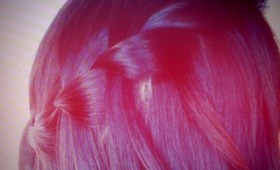
Hair
How To Do A Waterfall Braid/Cascade Braid
- 2448
-
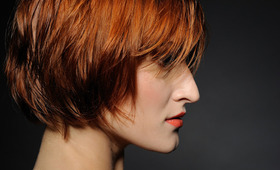
Hair
Short and Sweet Hair Inspirations
- 90
-
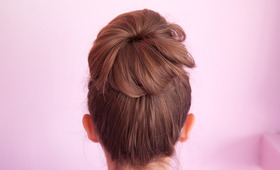
Tutorials
How To Do a Sock Bun
- 8624
-
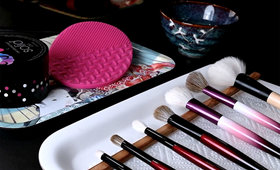
Makeup Brushes
The Definitive Guide on How To Clean Your Brushes
- 4
-
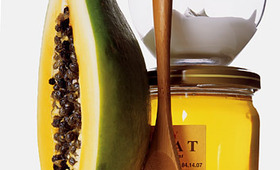
DIY Skin Care
DIY Face Skin Care
- 1805
-
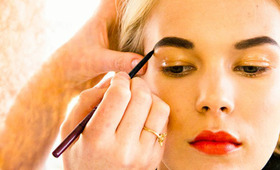
Tutorials
Get Perfect Eyebrows
- 520
-
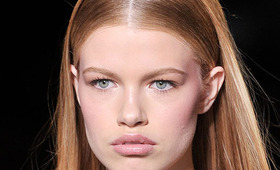
Hair
Milan Fashion Week, Fall 2011: Sleek Center Parts at Versace
- 6
-

Hair Color
How to Lighten Asian Hair
- 387






